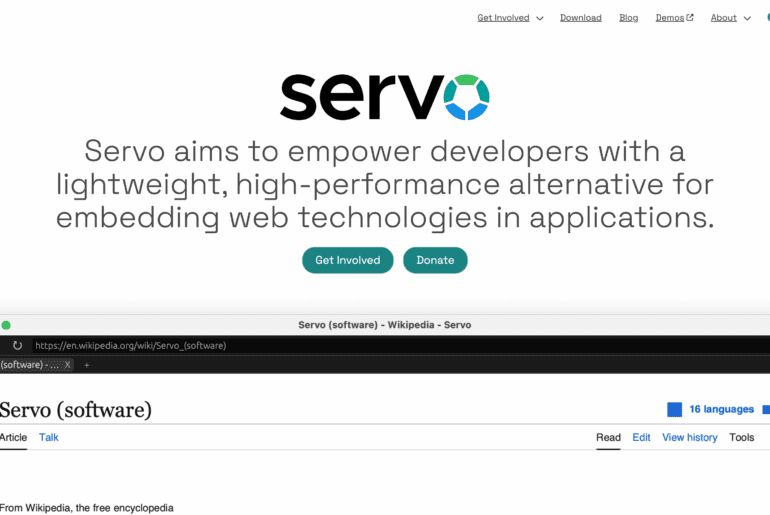Vercel and its CEO Guillermo Rauch have found themselves at the center of controversy after Rauch shared a post about meeting with Israeli Prime Minister Benjamin Netanyahu. The post described an “enjoyable” discussion about AI literacy, software empowerment, and optimism for peace and safety. It also featured flags of the U.S., Israel, and Argentina, reflecting Rauch’s ties. To many, this might have seemed like another tech-leader photo op. But given the backdrop of the ongoing Gaza war and Netanyahu’s polarizing reputation, especially in Western tech circles, the response was swift and charged.

Developers across Reddit, X, and LinkedIn criticized the post as tacit endorsement of a government facing international accusations of war crimes. Some called for boycotts of Vercel hosting and, in more extreme cases, the abandonment of Next.js altogether. LinkedIn and Reddit threads quickly filled with developers either announcing migration plans or urging others to consider alternative frameworks. Others, however, pushed back, arguing that Israel’s tech ecosystem and the open-source community should not be conflated with the government’s politics, and that penalizing Vercel risks collateral damage to maintainers and users who had no say in the CEO’s actions.
The controversy gained further visibility because of Paul Graham, co-founder of Y Combinator and one of the most influential voices in the startup ecosystem. When asked on X what he thought, Graham responded to Rauch’s post with a terse remark: “It seems a very deliberate choice at this stage.” His comment carried weight, not only because of his profile, but because Graham has recently criticized Netanyahu directly, supporting sanctions and calling some of Israel’s military actions “genocide.” For developers watching the industry’s moral compass, Graham’s response underscored how unusual and consequential Rauch’s post seemed.
Other tech leaders also weighed in, some in unexpected ways. Amjad Masad, CEO of Replit, responded with a pragmatic pitch: for developers looking to migrate away from Vercel, Replit now makes it easy to import and deploy Next.js projects directly from GitHub, even offering discounts for companies moving in bulk. His post was part opportunism, part acknowledgment that Rauch’s comments had created real demand for alternatives.
The situation highlights a structural tension in modern web development. Next.js is open source under an MIT license, but it is closely tied to Vercel, which develops and promotes it as the “native” platform. This tight coupling means that political or reputational controversies around Vercel can spill over into the perception of the framework itself, despite the fact that developers are free to self-host or deploy to other platforms like AWS, GCP, Fly.io, Render, or, as Masad was quick to note, Replit. In practice, teams that want to distance themselves from Vercel can do so without rewriting their Next.js apps—though they may need to replace Vercel-specific features like Edge Functions, image optimization, or KV storage.
For developers and engineering leaders, the real question may be less about politics and more about governance and resilience. How much risk do you assume when your stack depends on a company that also controls the narrative and branding of the framework you use every day? Is your deployment pipeline portable, or are you locked into a vendor’s ecosystem? For some, Rauch’s post is a wake-up call to review those questions. For others, it’s a reminder that open source gives you the option to separate the tool from the company behind it.
What’s clear is that Vercel and Next.js now face more than just technical scrutiny. For a community that often prides itself on neutrality and inclusivity, the fallout shows how quickly political alignments at the executive level can reverberate through developer trust, adoption decisions, and even framework selection. Whether teams choose to stay the course or migrate away, this episode has made visible a risk that’s usually background noise: the human and political choices of the leaders behind our tools.
What this means for developers: migration, alternatives, and risk assessment
The immediate instinct (on X) for some teams has been to talk about ditching Vercel or even moving away from Next.js altogether. Before making a decision like that, it helps to frame the situation in terms of practical risk management rather than pure reaction.
Here are the key points to consider:
Separating Next.js from Vercel
- License freedom. Next.js is MIT-licensed. You can continue to use it without depending on Vercel as a vendor. The framework itself is not restricted.
- Vercel-specific features. Where things get tricky is if you’ve adopted features tightly coupled to Vercel’s platform—such as Edge Functions, ISR webhooks, image optimization pipelines, Vercel KV/Blob, or analytics. Each of these has substitutes, but mapping them out is your first step.
- Self-hosting. A Next.js app is just a Node.js app. You can run it anywhere you run Node: DigitalOcean App Platform, AWS Lambda + CloudFront, GCP Cloud Run, Azure Functions, Fly.io, Render, Docker/Kubernetes clusters, or even traditional servers.
Migration checklist if you’re leaving Vercel hosting
- Deployment pipeline. Recreate your build/deploy flow in GitHub Actions, CircleCI, or your cloud provider’s CI/CD.
- Serverless functions. Map Vercel Functions to AWS Lambda, GCP Cloud Functions, or Fly.io Apps.
- Image optimization. Use CloudFront’s image transformations, Imgix, Cloudinary, or the built-in
next/imagesupport with remote loaders. - Incremental Static Regeneration (ISR). You can replicate this with background revalidation jobs on your own scheduler + CDN invalidation.
- Storage. Replace Vercel KV/Blob with Redis/Upstash, S3/GCS, or equivalent services.
- Previews. GitHub Actions + ephemeral environments (e.g. on Fly.io, Render, or Replit) can approximate Vercel’s Preview Deploys.
Alternatives to Next.js itself
Some developers are using the moment to reevaluate framework choices. Popular alternatives include:
- Remix (React-based, with a focus on nested routing and web standards).
- SvelteKit (Svelte’s official full-stack framework, lightweight and performant).
- Astro (content-first, partial hydration, often used for marketing sites/blogs). (You can read our recent Astro vs Next.js guide on some more context)
- Nuxt (Vue’s equivalent to Next.js, if your team prefers Vue).
Each comes with trade-offs around SSR, routing models, and hosting neutrality. For greenfield projects, it might be worth considering if the developer experience and long-term governance model fit better with your values and needs.
Risk assessment and governance questions
Instead of reacting only to today’s headlines, treat this as a chance to audit your dependencies:
- Vendor lock-in. Are you relying on a company-controlled SaaS feature with no portable equivalent?
- Exit strategy. Do you have a documented migration path off your current host?
- Bus factor. Who controls the project’s roadmap? Is it a foundation, a community, or a single company?
- Reputational risk. If a maintainer or executive makes choices you disagree with, can you keep using the tech without direct reliance on them?
Pragmatic next steps
- If you’re content with Vercel, you don’t need to change anything. But keep a migration doc on hand—vendor risk is real, regardless of politics.
- If you want to hedge, start dual-running a small service or staging environment on another host. This validates your escape hatch without disrupting production.
- If you’re ready to move off Vercel, scope the features you use, choose equivalents, and budget engineering time for testing and DNS/CDN cutover.
Bottom line: Whether or not you agree with Rauch’s post, this incident is a reminder that tooling choices are never purely technical. By auditing dependencies, planning escape hatches, and understanding the governance models behind your frameworks, you can insulate your product from reputational, political, or business risks—without making hasty technical decisions.










